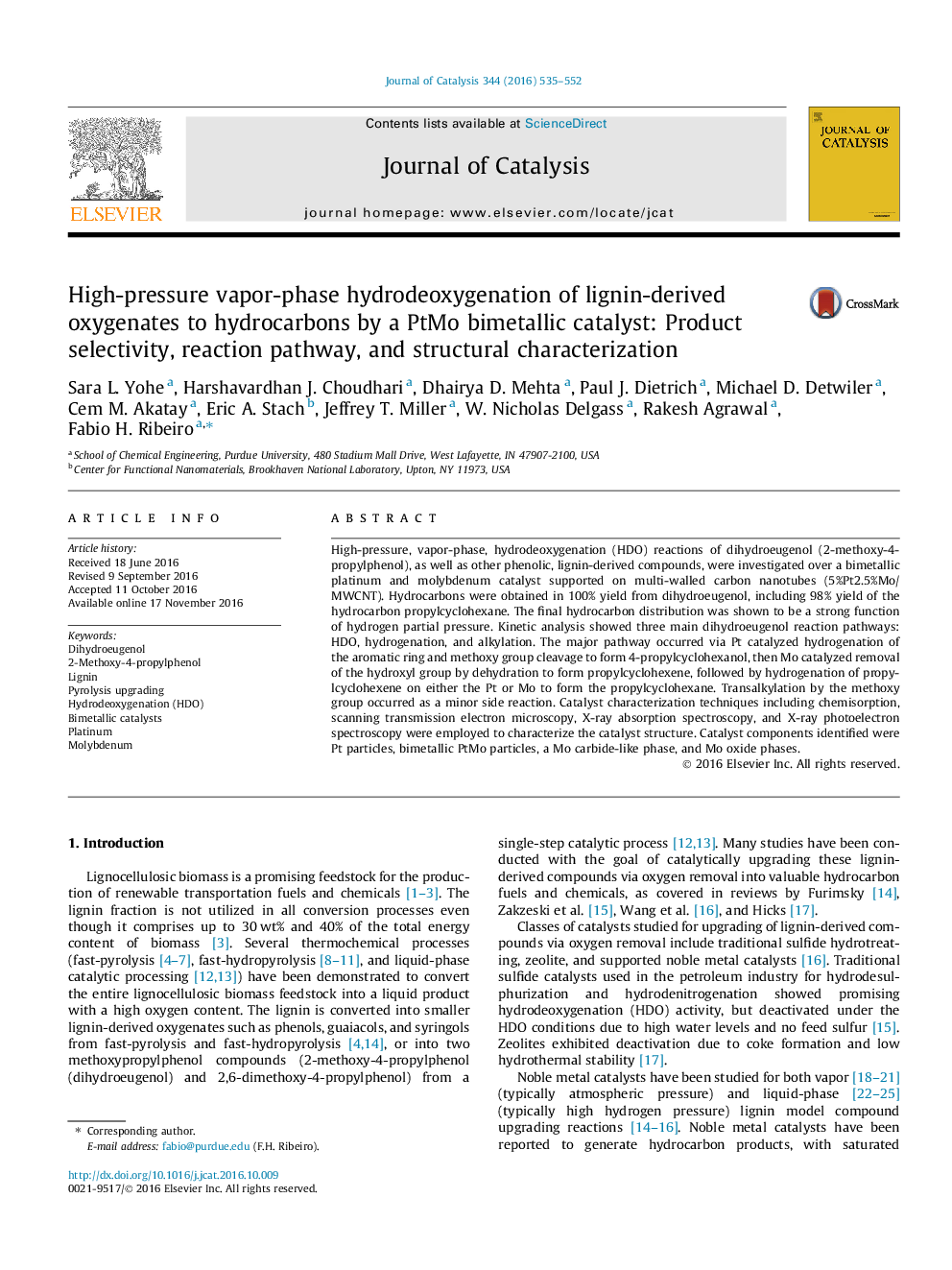| کد مقاله | کد نشریه | سال انتشار | مقاله انگلیسی | نسخه تمام متن |
|---|---|---|---|---|
| 6455877 | 1419765 | 2016 | 18 صفحه PDF | دانلود رایگان |

• Hydrodeoxygenation of lignin-derived oxygenates achieved 98%+ hydrocarbon yields.
• Reaction pathways on a bimetallic platinum/molybdenum catalyst are proposed.
• Aromatic versus saturated hydrocarbon ratio was controlled by hydrogen pressure.
• Enhanced selectivity was observed on the bimetallic versus monometallic catalysts.
High-pressure, vapor-phase, hydrodeoxygenation (HDO) reactions of dihydroeugenol (2-methoxy-4-propylphenol), as well as other phenolic, lignin-derived compounds, were investigated over a bimetallic platinum and molybdenum catalyst supported on multi-walled carbon nanotubes (5%Pt2.5%Mo/MWCNT). Hydrocarbons were obtained in 100% yield from dihydroeugenol, including 98% yield of the hydrocarbon propylcyclohexane. The final hydrocarbon distribution was shown to be a strong function of hydrogen partial pressure. Kinetic analysis showed three main dihydroeugenol reaction pathways: HDO, hydrogenation, and alkylation. The major pathway occurred via Pt catalyzed hydrogenation of the aromatic ring and methoxy group cleavage to form 4-propylcyclohexanol, then Mo catalyzed removal of the hydroxyl group by dehydration to form propylcyclohexene, followed by hydrogenation of propylcyclohexene on either the Pt or Mo to form the propylcyclohexane. Transalkylation by the methoxy group occurred as a minor side reaction. Catalyst characterization techniques including chemisorption, scanning transmission electron microscopy, X-ray absorption spectroscopy, and X-ray photoelectron spectroscopy were employed to characterize the catalyst structure. Catalyst components identified were Pt particles, bimetallic PtMo particles, a Mo carbide-like phase, and Mo oxide phases.
Figure optionsDownload high-quality image (30 K)Download as PowerPoint slide
Journal: Journal of Catalysis - Volume 344, December 2016, Pages 535–552